“Mehndi adorns the palm and life takes a new turn.”
Mehendi designs are a craze all over the world, be it Australia, the United States or the United Kingdom, you can always catch hold of a mehendi designer even off the Indian shores. Mehendi designs evolved over a period of thousands of years.
It is said in earlier days, Mehendi designs were specially carved out on wood, iron and ivory. The designs were smeared with freshly grated Mehndi leaves using wooden or heavy metal grinders. The juice would then be mixed with all the herbs, and juices that could darken the colour of the Mehndi.
Interestingly, in the Bible, Mehndi goes with the name of camphire and the Sanskrit name given to Mehndi is Mendhika.
The ancient scripts mention that Mehndi was used by the famous Cleopatra for body art and different hair shades. Mehndi was also smeared on dead bodies before the mummification of the pharaohs in Ancient Egypt.
Even Prophet Mohammed is said to have used Mehndi for dyeing his white beard and had recommended the use of Mehndi to those around him. It is also a part of the 16 steps in the Shringar procedure done in the Diwali, Holi, Karva Chauth or Teej.
These festivals are celebrated all across the country.
Mehendi designs have evolved over a long period by now. The use of Henna seems to have been quite frequent since the later periods of Bronze Age. The first initial descriptions come from Ugaritic legend of Baal and Anath. Anath had put Mehndi to celebrate the victory of Baal.
Paintings in Akrotiri (found before the Thera eruptions in 1680, BCE) depict women’s marking nails, hairs, feet, and palm with Mehendi designs.
Don’t believe what you read?
Yes, you read it right!
Mehndi always had multiple uses, they were applied on the palms and the feet primarily for cooling down the body.
The Vedic Literature states that the application of Henna on palms and feet is a way of invoking the inner Sun.
Jews, Hindus, Christians and Muslims adorn the bride and the groom’s feet and palm with Mehndi.
Different statues of ancient women from across the world have raised hands, where their palms are depicted to be marked with intricate Mehendi designs.
Preparation and Application of Mehndi Design on palms and feet
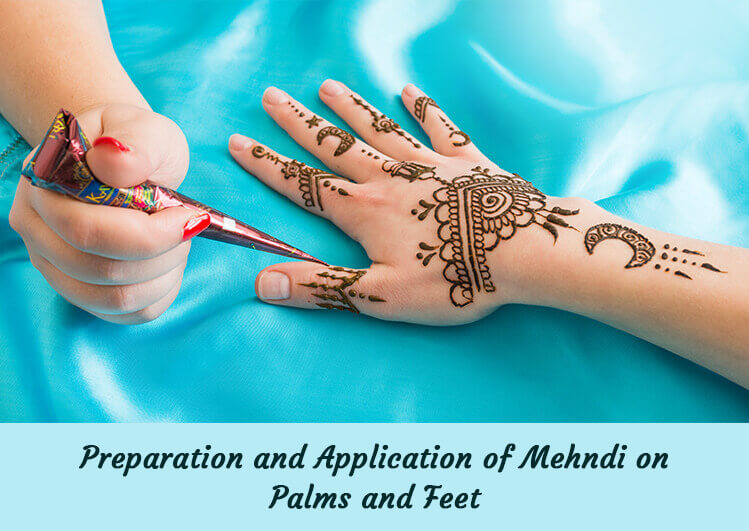
The leaf of Lawsonia is dried and finely ground into a powder to carve beautiful Mehendi designs.
Some people also mix other ingredients into it, to shape it into different colours to use it for Mehendi designs.
The leaf powder can be mixed with lemon juice, tea concoctions or coffee to make the pH acidic.
A certain pH range is often considered beneficial for the release of Lawsonia molecules, thus increasing the amount and degree of pigmentation on hands and feet.
In ancient times, the thin paste was slowly spread on the palms, and feet in specific patterns when Mehndi stamps were not prevalent.
The Mehndi paste was also applied on the hair for colour and conditioning in the form of a hair paste.
Colour of the Mehendi designs often darken, when lemon juice is applied over the Mehendi, followed by application of sugar syrup.
Sometimes, the Mehendi when mixed with turmeric or beetroot juice can give you different shades of Mehendi.
Use of lemon juice and sugar is primarily used to darken the colour of Mehndi on palms, over the feet, and the hands across the warmer parts of the world.
Use of tamarind in colder areas can help fix the Mehndi colour.
Once the paste is applied in the form of Mehendi designs, the Lawsonia molecules immediately bind to the outer layer of the skin, pigmenting the skin layer.
Since the skin of the sole, and the palms are the thickest, they usually get stained more deeply when the Mehendi designs are applied on them.
The Mehndi can also be darkened by applying hot air or moist warm air over the Mehendi designs.
Any sort of alkalinity would definitely darken the stain of the Mehendi design.
Soaps and harsh chemicals can reduce the depth of the stain of the Mehendi design.
Cones made of dried leaves were filled earlier with the Mehndi paste, and often used to carve beautiful designs on palms.
The Mehndi smeared wooden, or marble stamps came into use in later times, that were applied on the palms, and feet on bright, sunny days, even without a ceremony across the Indian subcontinent.
The Mehndi dot pattern was used in ancient times, prior to the elaborate use of Mehendi designs.
As a rule, the Mehndi paste must be retained on palms for a minimum of 4 hours to get colour and to get best results, Mehndi must be on the palm or hairs from a span of 6-8 hours. One can use tomato juice, or pomegranate juice as well.
The Mehendi stain can stay on palms and feet from three weeks to more than two months depending on
- The type of Mehendi leaves used,
- the duration for which the Mehendi was kept on the palm and the feet and also
- on the release of the Lawsonia stain from the leaves into the skin.
Tips to darken the colour of your Mehndi designs or to create a different Mehndi shade.
- The use of lemon juice to extract maximum pigment from the Mehndi paste is used for maximum Mehendi designs.
- Use of beetroot if you want a burgundy shade on your hands and hairs (be careful if applying beetroot juice for hand Henna preparations. Try to use the beetroot juice to mix the Henna) for the Mehendi design.
- If you want a yellowish shade, the one that adorned the hairs of Jason Momoa in the film “The Aquaman.” Please don't forget to add a pinch of turmeric to the Mehendi design paste.
- If you want a deep reddish tinge of Mehendi then please do not forget to add crushed clove or clove powder.
- Do you want a bright red Mehendi, you can add pomegranate juice to it.
- If you are interested in bright brown shades of Mehendi you may add coffee powder to your paste.
- Do you want a light brown shade of Mehendi, add tea concoction to the Mehndi paste.
Benefits of Mehendi

Mehendi benefits the human body immensely.
- When applied over inflammation, the Mehendi can reduce it down.
- Mehendi is frequently used as a remedy for hair thinning.
- The Mehndi paste is used to treat skin diseases.
- Mehendi is used to heal headaches and stomach pain when made into a paste.
- Mehendi is also applied in doors of Morocco to ward off Evil spirits and for prosperity.
Modern Use of Mehendi
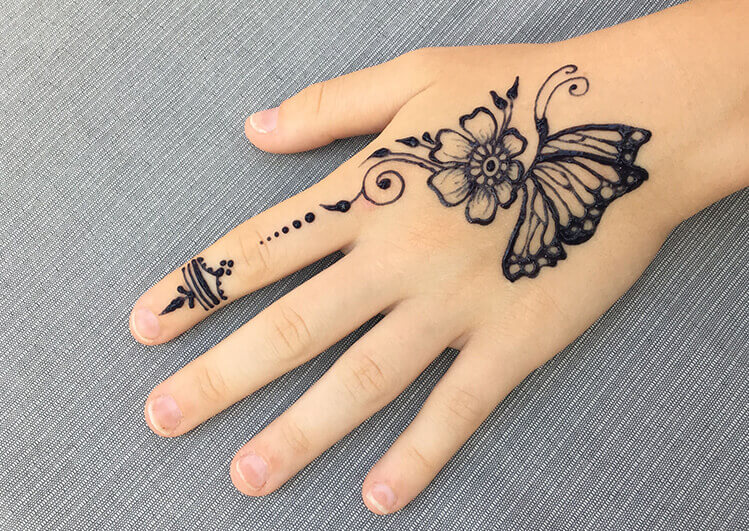
In modern times, the Mehendi designs are used for the creation of temporary tattoos on hands, feet and other areas of the body. Some cultures prevent permanent tattooing and thus, Mehndi is used to produce it.
Often mixed with indigo, the black Mehndi colour can be achieved for tattoos and body colouration. Be careful though, Mehendi designs can only appear beautifully, if you know how to make it into a very soft paste.
You have to fill up the cones and slowly squeeze the paste to apply it uniformly on the palms and feet. The finer the Mehndi designs, the finer the hole of the cone needs to be.
If you are using it on your palms, you can add a little sugar while the Mehndi is drying.
Do not apply water for 24 hours, if possible. The colour takes almost three days to develop sometimes depending on the climate.
Different Mehendi Styles practiced across the world
The Mehendi styles vary from culture to culture. The Arabs use large floral patterns to design their hands and feet whereas the Indians use floral, lace, paisley and fine lines mainly to do the Mehendi.
Mehendi designs in India are being vividly described here.
We would also share some Mehendi designs popularly used across the Arab subcontinent (Saudi Arabia and its adjoining areas) including the Islamic nations of Pakistan and Bangladesh as well Morocco (African subcontinent).
We would discuss a little about how the use of Mehndi and the Mehendi designs have impacted different civilizations.
- Mehendi designs in India
- Mehendi designs in Middle East
- Mehendi designs in African subcontinent
|
Mehndi designs in India |
Mehndi designs in Middle East |
Mehndi designs in Morocco |
|
Minimalist Look |
Bolder Arabic Cashew patterns |
Diamond shaped Moroccan design |
|
Multiple elegant patterns |
Asymmetric circle patterns |
Tribal Moroccon Mehndi design |
|
Floral Designs |
Sparse Arabic designs |
Contemporary Morroccon patterns |
|
Concentric elegant Circular patterns |
Veil and Tower Arabic Mehndi designs |
A single Paisley Mehandi design |
|
A pattern of trails |
Striking Sun Arabic Mehndi designs |
|
|
Mandala Designs |
Heart Arabic Mehndi design |
|
|
Veins, Lines and Leaves |
Rose Arabic Mehndi design |
|
|
Waves, hearts, and peacocks |
Simple Finger-tip Arabic Mehndi design |
|
|
The King-Queen design |
Leaflet Arabic design |
|
|
Asymmetric designs |
Net Arabic design |
|
|
Heterochromatic designs |
Beaded Arabic Structure |
|
|
Dainty strokes in an ascending pattern |
Motif based Arabic Mehndi designs |
|
|
Wedding Mehendi designs |
Ornamental Arabic Designs |
|
|
Marking palms with separate unique elements |
Geometric Arabic designs |
|
|
Love Story depictions |
Floral Arabic Mehndi Designs |
|
|
Bold motifs and checks |
Criss cross Mehndi design |
|
|
Lots of empty spaces and a few curves |
Floral Finger Arabic design |
|
|
The dangle design |
Mughal Mehndi design |
|
|
Soporific Mehendi designs |
Triangular Arabic Mehandi design |
|
|
Jumbled up patterns |
Symmetric patterned Arabic Mehndi design |
|
|
Mehndi designs for the relatives |
Cones and meshwork Arabic design |
|
|
Feel like a beautiful Princess |
Finger decorations in Arabic style |
|
|
Mehndi designs for children of the family |
Curve or comma shaped Mehndi design |
|
|
Indo- Arabic Mehndi designs |
Chequerboard Arabic Mehndi design |
|
|
Block Mehndi designs |
Yemeni Arabic Mehndi design |
Mehendi designs in India

In India, every part of the subcontinent practices Mehndi in some form or the other. India is a vast nation, it is divided into the Northern, Southern, Eastern, Western and Central zones.
The Northern, Western, Southern and the Central zones primarily practice Mehndi customarily and occasionally. The Eastern India, however, differs from the rest of the country where Mehndi is not practiced, rather they use a red fluid (Awlata, Mahawar or Rose Bengal) to colour their hands, and soles of the feet primarily.
In the Northern part of the country, Mehndi is primarily used for pigmentation of the skin in different patterns and forms. Mehndi is also a talisman, to invite luck and prosperity.
In Southern India, Mehndi is primarily known as Mrudhaani in the Tamil Sangam, and Gorintaku in the Telangana region of the Deccan plateau.
The Southern region is primarily located between the Tropic of Cancer and the Equator and thus, with a tropical climate on head, they have to deal with a lot of heat. It is said that almost 5000 years ago in India, Mehndi was used for healing purposes as these wonderful leaves have a cooling effect that aids the digestive system and the respiratory system.
The Mehendi designs in the Northern part of the country are not as intricate as the ones in Northern India though.
Mehendi designs are used in different occasions all across the country, some of them being
Mehendi use in Wedding occasions
- Mehendi use in Childbirth occasions
- Common temporary Tattoo designs with Mehendi.
- Prevention of ill-defined magic and sometimes to even ward off the evil spirit with use of Mehendi.
Mehendi designs in Arabian continent
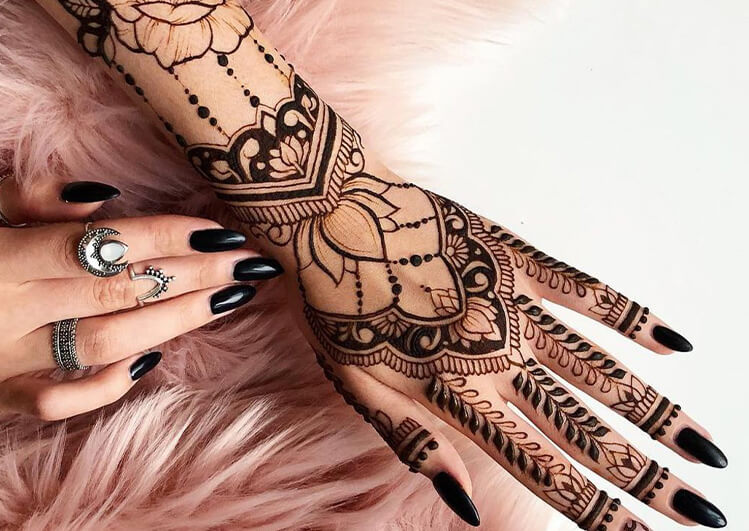
Arab is the origin of Mehndi as per different datas. It is believed by some historians that Mehndi migrated from the Middle East and North Africa to India through the Moguls. Can you distinguish the Arabic Mehndi design from the Indian? Of course, you can.
You can clearly distinguish Arabic mehendi designs from the Indian Mehendi designs by the use of broad floral patterns, huge leafy structures, lesser intrications in comparison to the Indian designs and patterns.
The cashew pattern and the palm leaf patterns are primarily used by the Arabian subcontinent.
The Arabic mehendi designs lack the Hindu forms and patterns including the kalash, bride and groom projections and are often seen to be exchanged with domes, leaves and flowers.
Strangely in some Islamic nations like Pakistan, the use of Mandala patterns is quite popular almost like that in India.
Mehendi designs of Morocco

Morocco houses the plant and no one knows if Mehendi began its journey from here, spreading slowly across the world.
Mehendi designs used by the Berber race of Morocco are nonetheless beautiful.
They are simpler in pattern majorly using magic squares, numbers, verses from the Qurans and other geometric shapes including the sacred square patterns.
The Hennayas often use specific designs to keep the Jinns away from the human body.
Different types of Mehendi designs in India
Every occasion has several Mehendi designs to choose from, be it marriage, be it a birth ceremony. Given below are some of the Mehendi designs used across the subcontinent to create flawless patterns and forms.
Mehendi use in Wedding Occasions in India: Mehendi application during the Wedding seasons is quite gorgeous and systematic.
The Mehendi artist prepares almost for a month before coming to a Wedding in wedding seasons.
Few of the different patterns made from the Mehendi mixed with different herbs are used all across.
1. Minimalist Look

A simple Mehendi design of curved lines and square boxes on one portion of the palm can also make your palms elegant and trendy.
This design also goes very well for the Teej festival.
2. Multiple elegant patterns
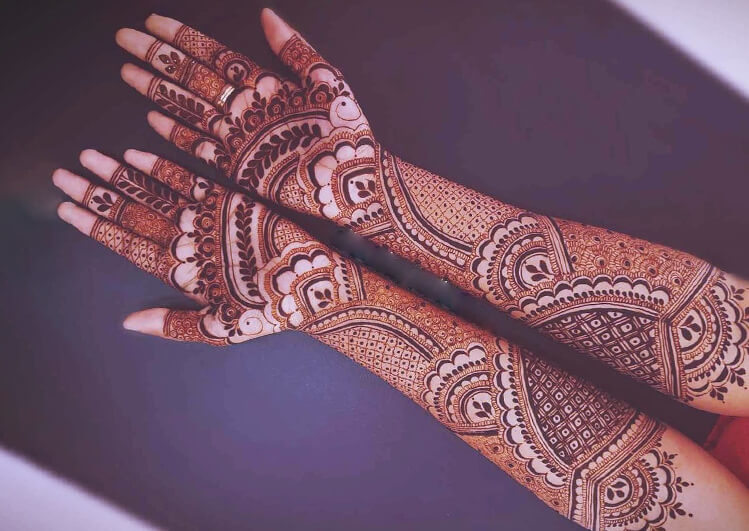
This is a patterned Mehendi design where leaves, floral patterns, jalidaar designs are used with catchy light and bold strokes with a lot of empty space adding to the beauty of the design.
This also looks good on the night of the Karva Chauth festival.
3. Floral Designs

Round floral prints and S-shaped floral dots when curve together look amazingly docile and meek for a Mehendi design.
Holi is also a festival when you can decorate your hands with beautiful colours before playing with the real colors.
4. Concentric elegant Circular patterns
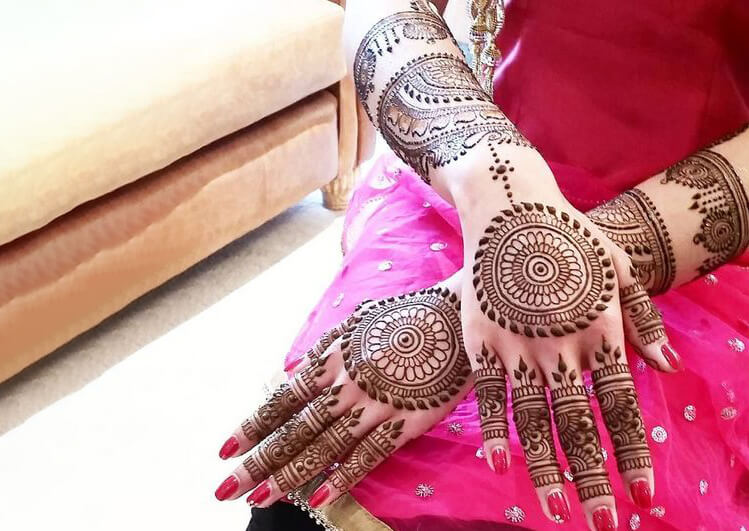
Mehendi design when in concentric arrangement of circles look absolutely fabulous with dotted lines.
Belts are drawn over the fingers and a bracelet pattern is formed on the lower arm with a Mehendi design that is articulately curved out of thin lines and shapes.
5. A pattern of trails

Basically, a trail of patterns is created with the Mehendi moving through the palms in large floral shapes with lots of commas and dots that make it a complete pattern of beauty and elegance for a Mehendi design.
6. Mandala Designs
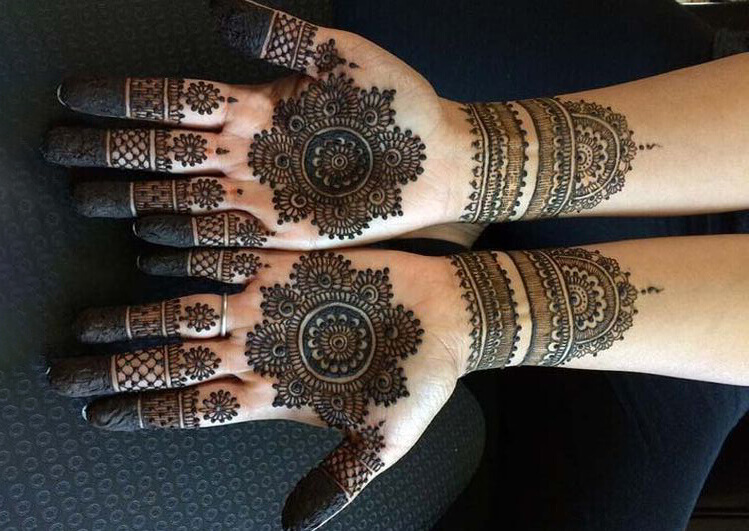
Mandala Mehendi designs are very famous and borrow the pattern of imprint from the Tibetans.
It is a form of Mehendi design that would be done in such a way that there is no end and no beginning to it.
7. Veins, Lines and Leaves

Veins and lines adorned with leaves make such Mehendi designs awesomely beautiful on hands.
Simple to make these Mehendi designs just need a few lines to be drawn horizontal, vertical and parallel to the other lines.
Leaves big and small can go very well with the lines and veins. This Mehandi design is one of the simple Mehendi designs.
8. Waves, hearts, and peacocks

Waves are drawn all across the palm in this form of Mehendi designs.
These are further graded to include peacocks and hearts. In the North Western region of India, this design is a hot favorite amongst people.
Peacock is the National bird and is seen walking down the North Western roads of India frequently thus inspiring the creation of this design.
9. The King-Queen design
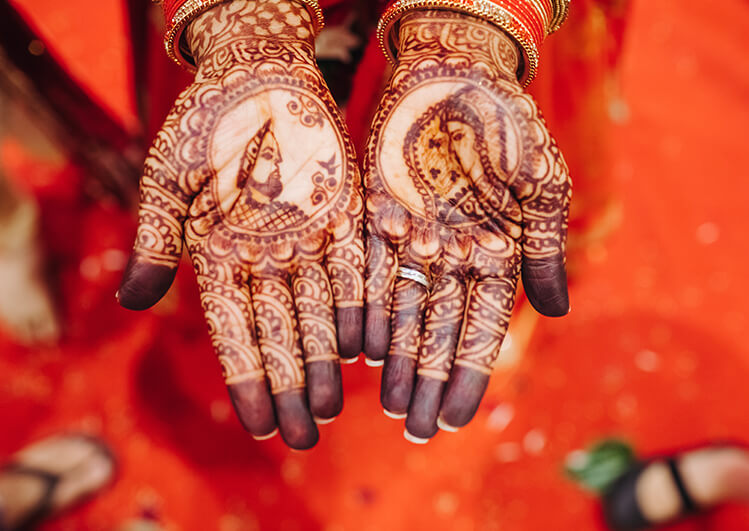
You can draw a King and a Queen on two different palms in this Mehendi design.
The modern bridal collections can use this Mehendi design as a beautiful ensemble that can also be used during the marriage of the Prince and Princesses all across our country.
This Mehendi design looks royal on hands, there is no doubt about it.
10. Asymmetric designs

Asymmetric Mehendi designs are being used now widely and is another simple Mehendi design. There is no particular symmetry maintained between the lines and the patterns in this type of Mehendi design.
Everything is a free hand style.
The liberty to draw anything and everything also rises in this scenario.
Dark foliage trees and burnt brown trees can also be depicted very easily.
11. Heterochromatic designs
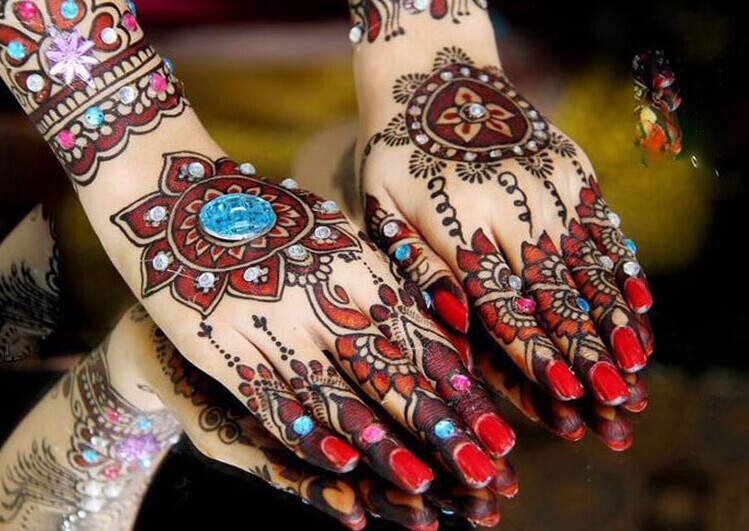
Heterochromatic Mehendi Designs are also a craze amongst the younger generations.
Different colours are being used to draw designs.
Separate colours are used to draw for two different limbs often, sometimes even more than two colours are used.
12. Dainty strokes in an ascending pattern
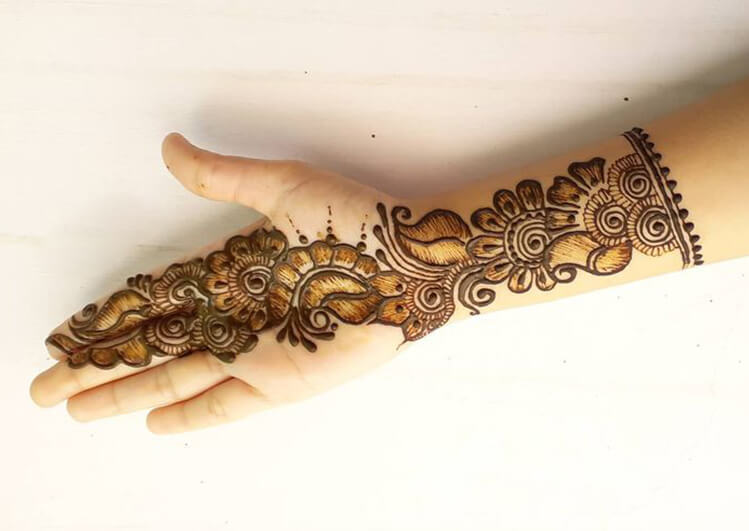
Strong strokes are used in an ascending order, even in a descending order at times to produce a shaded pattern experience that creates these beautiful Mehendi designs.
On the outer side of the feet, these designs look great and elfin with the use of black Mehndi.
13. Wedding Mehendi designs

Wedding Mehendi designs are used primarily for marriage events.
A bride, a groom and some wedding rituals are often prominently highlighted through these Mehendi designs.
14. Marking palms with separate unique elements

Often tribal paintings and caricatures are used to create patterns and shapes in this type of Mehendi design.
Warli patterns, often Madhubani painting patterns from Mehendi are also used to make impactful Mehendi designs.
15. Love Story depictions
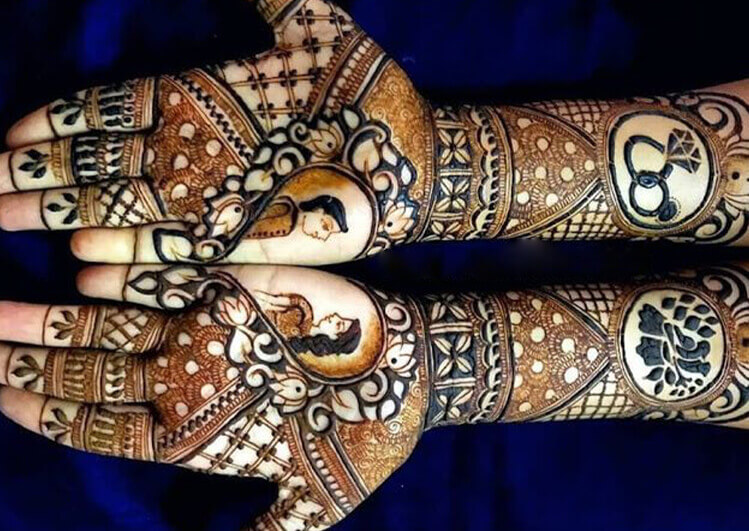
The love journey of a couple is designed and depicted through the use of small images.
Each image is chosen often in accordance with the bride and the groom’s preference.
Sometimes, such Mehndi themed weddings are also held in different parts of the Indian subcontinent, where everybody wears the same Mehendi designs.
16. Bold motifs and checks

Often some designer motifs are chosen and they are arranged with checks and patterns of different shapes and sizes for creating this particular Mehendi design.
Mostly, flowers, animals or birds are combined together to form such motifs and this mehendi design is circumscribed with checks and various other patterns.
17. Lots of empty spaces and a few curves

If you try to cover emptiness filling it with lines and curved patterns, the emptiness encompasses a beautiful, gorgeous mehendi design that outgrows mostly all finest mehendi designs.
18. The dangle design

Dangles can be in your earrings, anklets or amulets and also in your mehendi designs.
These mehendi designs are a bell shaped structure with small dots to line these bells.
The dangles can look pretty not only on earrings, anklets and amulets but also on your hands and feet adorning different mehendi designs.
This Mehendi design is very different and promises a newness like many others.
The dangles are drawn out usually from the centre of the palm towards the periphery.
19. Soporific Mehendi designs

Often the henna is made black by adding Indigo dye to it and the Mehendi designs are made in a way that includes soft, subtle touches.
The Mehendi designs are beautiful and often antagonistic to each other.
20. Jumbled up patterns
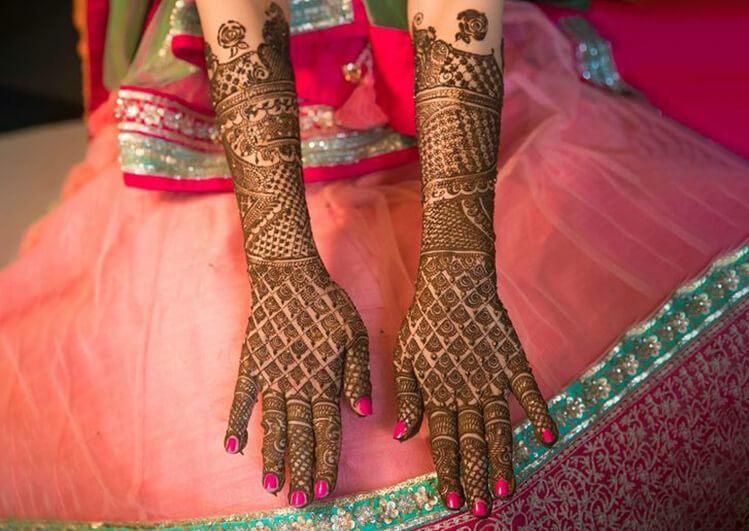
Jumbled up patterns are majorly used for the criss cross Mehendi designs that are depicted together in one condensed art form.
It often encompasses the fancy of the designer. Thus, it may not be very organised or patterned, making it a jumbled pattern form.
21. Mehndi designs for the relatives
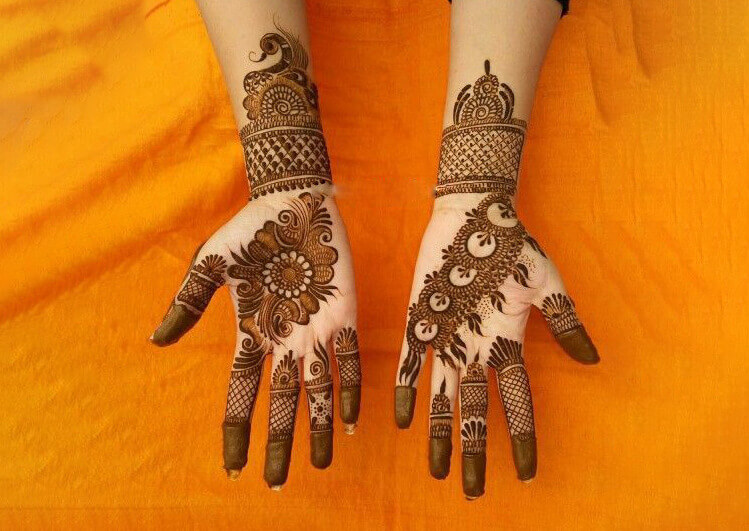
Mehendi designs for relatives are often different from the bride’s designs.
The Mehendi designs might be a little old fashioned, often involving the criss-cross pattern and the other formats of square boxes and curves outlined together.
22. Feel like a beautiful Princess
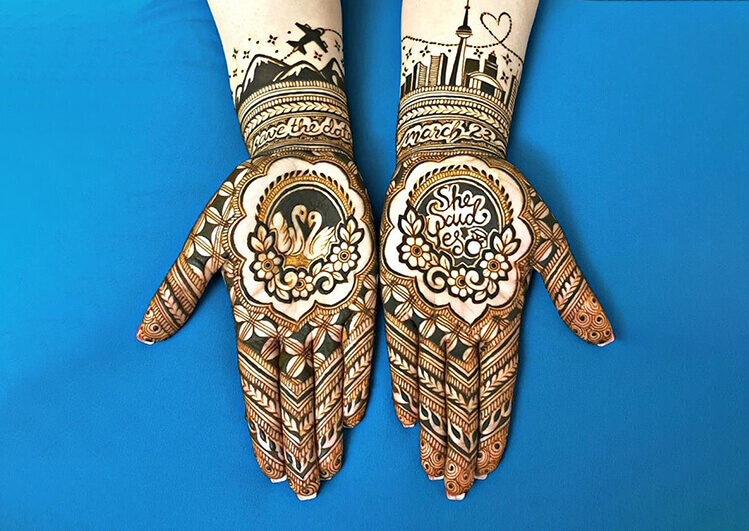
The Princess Mehendi designs often involve forts & images of some yesteryear love birds and love story depictions.
This Mehendi design is widely prevalent amongst the rich and lavish weddings.
23. Mehndi designs for children of the family

Children of the family are often desirous when they come across so much fun and celebration around.
Some simple Mehendi designs for simple hands include simple floral designs and simple forms that sit well on tiny palms.
24. Indo- Arabic Mehndi designs
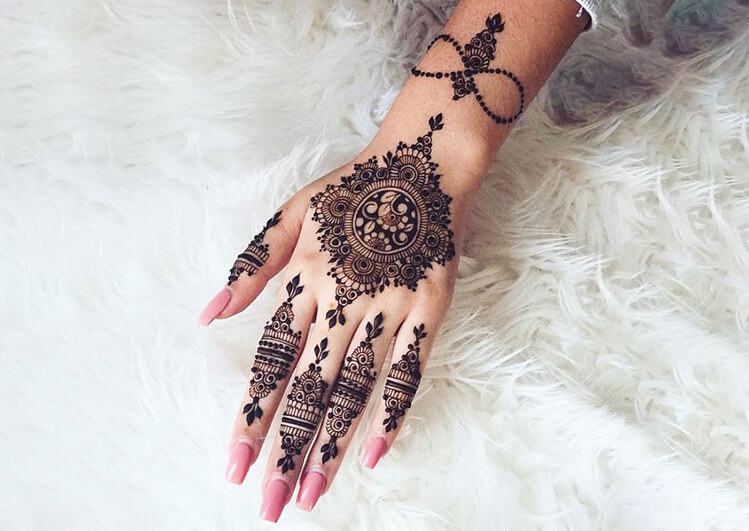
Indo-Arabic Mehndi designs are floral imprints large and daintily painted on the hands.
The Arabs prefer their patterns big and beautiful. Big strokes of the mehendi designs adorn their palms.
These mehendi designs can also be used very well in marriage ceremonies.
25. Block Mehndi designs
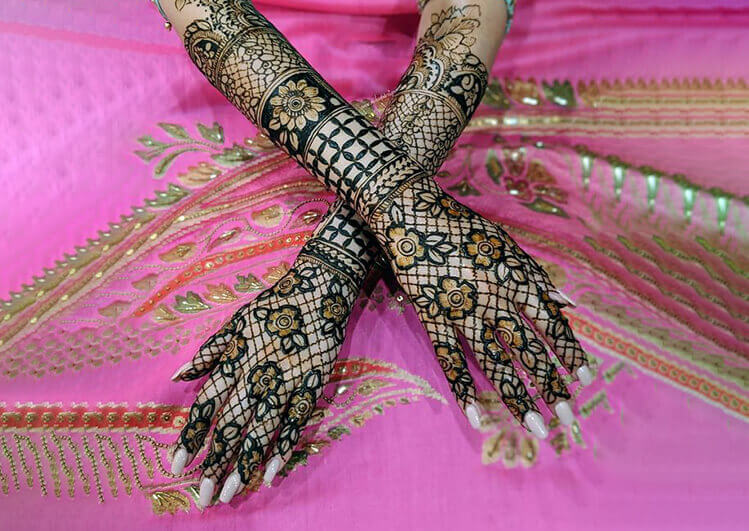
Block Mehndi designs are generally block patterns on palms- these can be any form of shapes welded together, it can be geometric forms or big bold S-shaped pattern.
The Block mehendi designs commonly involve regular shapes to create patterns and they often involve square, rectangles and other such variety of forms and techniques.
Use of Mehendi in various occasions of Childbirth
Mehendi use during childbirth is an altogether different phenomenon. Mehendi use during childbirth is primarily to ward off evil eye.
Mehendi use is to create a good environment, to bring positivity and to make life better.
The child cannot use very harsh chemicals and thus, the fresh leaves are grated and the fresh paste is applied on the palms and feet of the newborn child.
Mehendi can be a coolant for the child.
In Morocco and other arid areas, Mehendi leaves are crushed and the paste is wrapped in a piece of cloth. The crushed Mehendi leaves are often applied on the tummy of a child suffering from stomach pain.
Designs that you can use during childbirth would also include
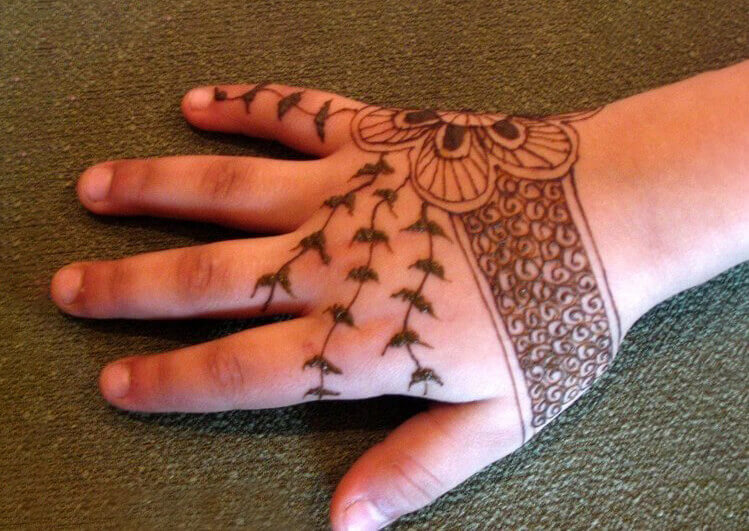
1. Simple leaf patterns: Simple Mehendi designs would include simple leaf patterns joined by the twigs on the tender palms.
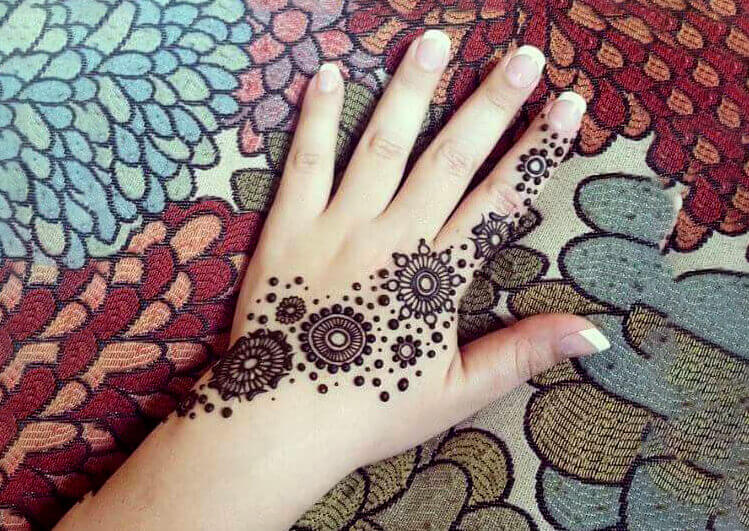
2. Simple polka dots: This is also one of the simple Mehandi designs again, this pattern is used to create a pattern of small and big dots scattered across the palm.
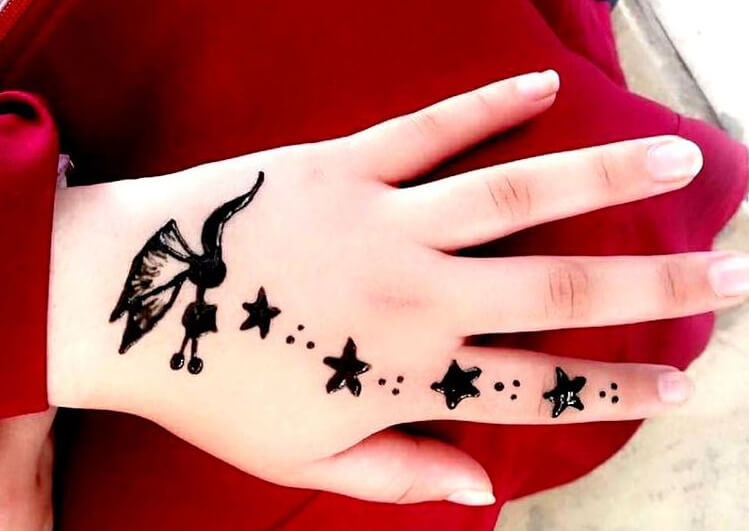
3. Simple star patterns: Simple star patterns are created out of the Mehendi smeared on the palms and feet of the newborn child.
Common temporary Tattoo designs with Mehendi
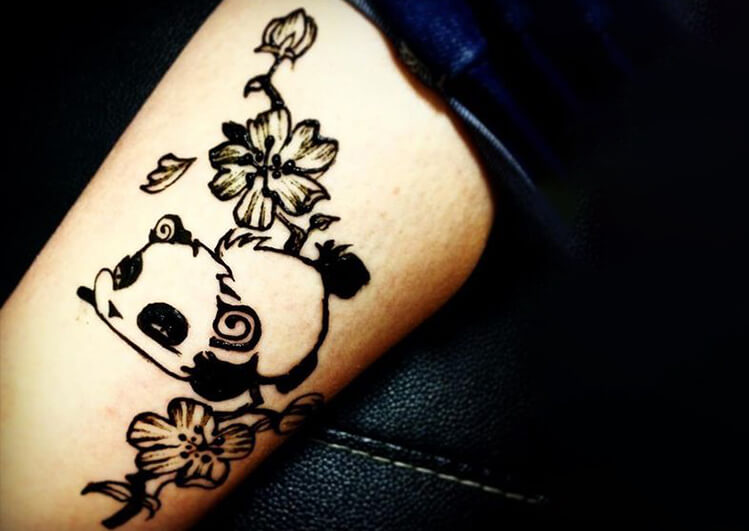
The common temporary Tattoo designs with Mehendi is done in a special way.
Special simple mehendi designs are carved out in wood, iron, copper and ivory.
This kind of Mehendi design is prominently used in Tattoo making units all across the world.
The carved wood or ivory is filled with the grated paste often loaded with chemicals to achieve the desired colour.
The wood carvings are mainly used frequently.

Ill-defined magic and warding off Evil is a very old custom practiced by many. Different cultures have always used different devices and ways. Mehendi has strangely been used as an instrument to ward off evil.
The smell of Mehendi is something that evil beings do not like, and the slimy nature of Mehendi is disgusting for many evil spirits.
The purity of the nature of Mehendi, is the reason why it is applied on newly wed brides and grooms.
Arabic Mehndi designs
Some of the mehendi designs found to be used in the Arabic and the Islamic subcontinents in Arabic, and Islamic ceremonies are:

1. Bolder Arabic Cashew patterns: The Arabic cashew pattern is drawn all around the palm boldly and broadly.
The Cashew pattern might expand all across the palm, and might be adorned with floral and other curved patterns in this mehendi design.
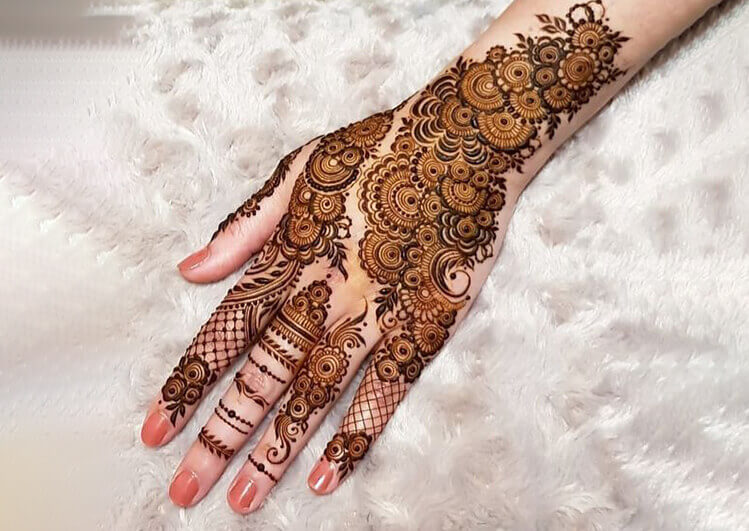
2. Asymmetric circle patterns: It’s not the floral pattern but rather huge circles drawn with leaves extending out of the circles in this mehendi design.
There can be a lot of dots and curves in the entire mehendi design for use.
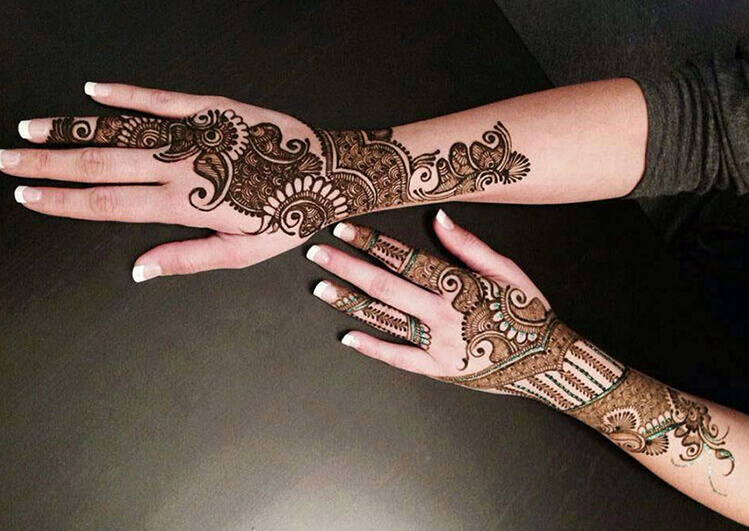
3. Sparse Arabic designs: Sparsely placed flowers, cashew nuts extending into leaves, comma patterns and other such mehendi designs forms and shapes are often used separately in this mehendi design form.
There could be only cashew nuts, or only leaves or sparsely placed leaves and floral imprints used in this type of a mehendi design.
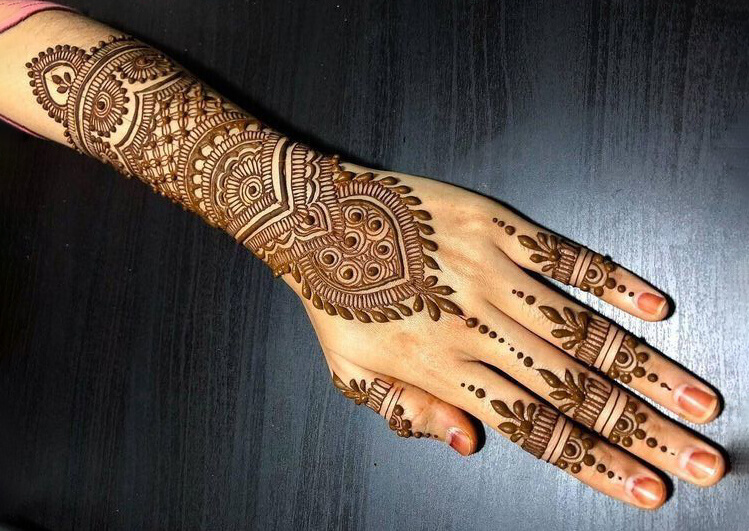
4. Veil and Tower Arabic Mehndi designs: Veils would be spread across your fingers and then the tower appears in the palms.
This mehendi design most likely takes the tattoo form.
This can be often interspersed with floral designs and the floral spread may very well be seen interspaced between the veils and the towers.
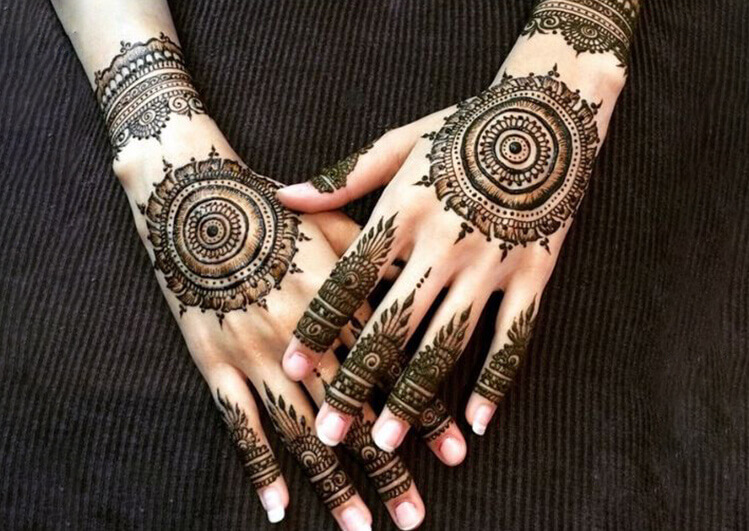
5. Striking Sun Arabic Mehndi designs: The mehendi design is mainly drawn with a Sun drawn around the centre of the palm or feet. The Sun mehendi design is immensely catchy when done on the feet.
The Sun mehendi design often involves a hollow circle followed by radiating patterns in the form of leaves and twirls.
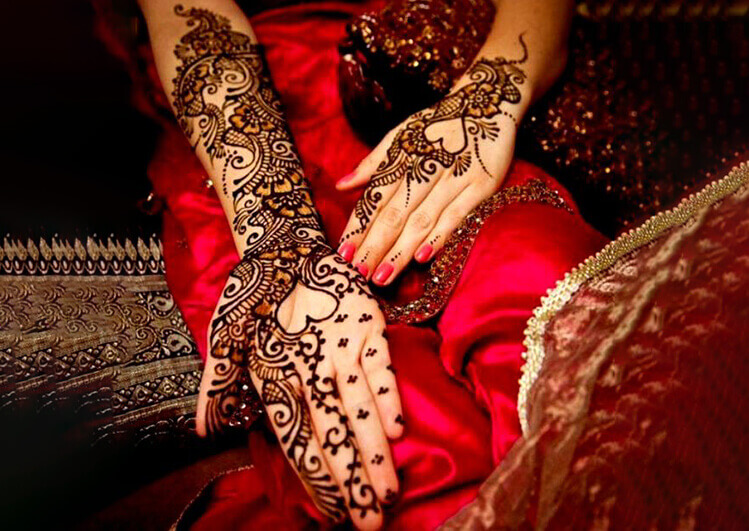
6. Heart Arabic Mehndi design: The Heart Arabic Mehndi design involves definitely a half heart shape in a palm so that when you join your palms, the whole heart-shaped mehendi design comes alive. There are squares that can fill your heart, or there could be some smaller fuller hearts within the larger heart shape.

7. Rose Arabic Mehndi design: The roses are inscribed on the hand, minimally decorated with leaves and curls and twirls.
This goes very well on the back side of the palm.You could also draw the same rose on the palm.
If you draw the same number of roses on the front and the back side of the palm, then the design would take a symmetrical shape and look very splendid when it is well spaced and dotted with leaves and curls.

8. Simple Finger-tip Arabic Mehndi design: This simple Mehndi design is way too simple and mainly involves decoration of the fingertips.
The palms are minimally designed with twirls, curls and leaves.
The fingertips are decorated splendidly and would involve the use of Paisley structures all around the fingertips.
This form of a simple Mehendi design would involve use of semi-Paisley structures interlaced with leaves and twirls.

9. Leaflet Arabic design: In this form of a simple Mehndi design, various leaves are drawn together beaded with threaded structures and patterns. Bigger and smaller leaves intersperse the Paisley structures often.
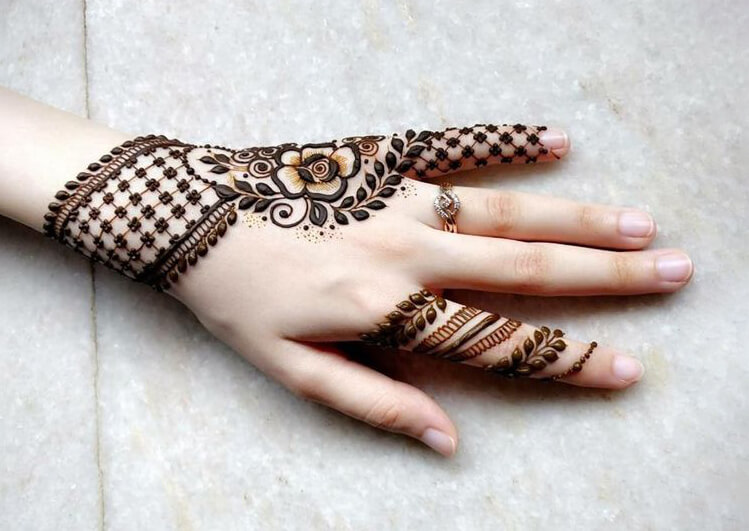
10. Net Arabic design: Lots of nets, small and big criss cross across the palms in this simplistic mehendi design pattern.

11. Beaded Arabic Structure: Beads are spread across the structural pattern of this Mehndi design.
These beads form structures if you join one with the other.
Small beads mostly are drawn around the periphery and larger beads are drawn in the centre in this simple Mehendi design.
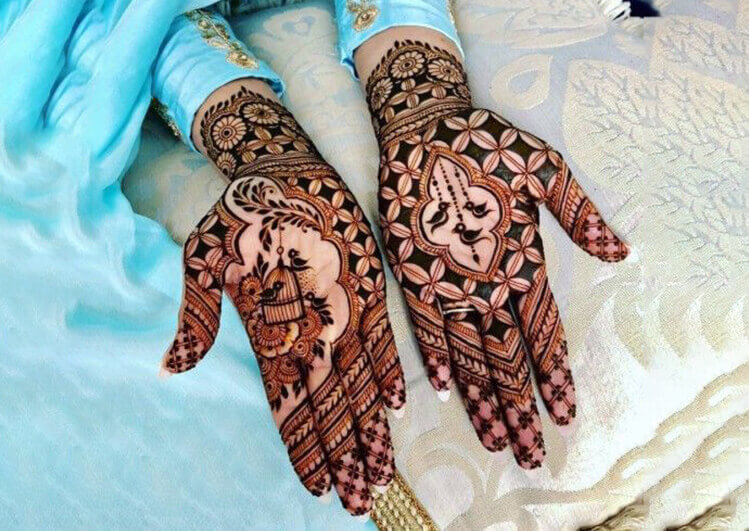
12. Motif based Arabic Mehndi designs: This Arabic simple Mehndi design too involves motifs.
Elaborate and different motifs adorn the palms, covering the length of the palm or is often decorating entire palms.
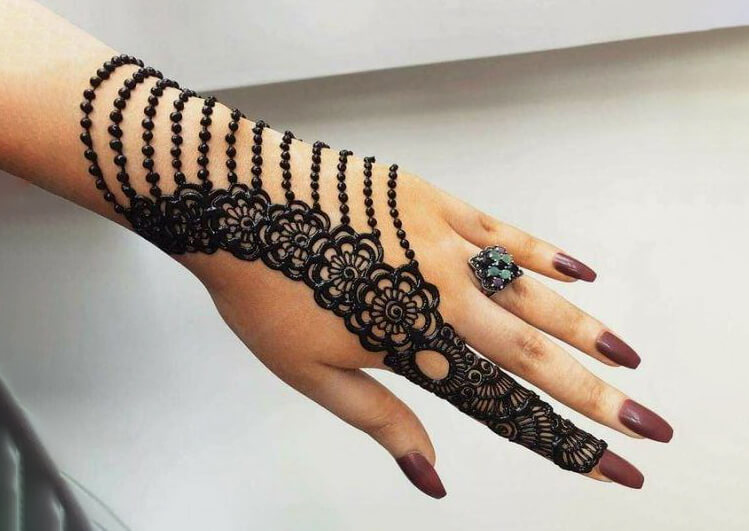
13. Ornamental Arabic Designs: Floral vines with dotted strings running from the back side of the palm gives this Mehndi design, an ornamental appeal.
These floral strings run down from the index finger covering the entire wrist often.
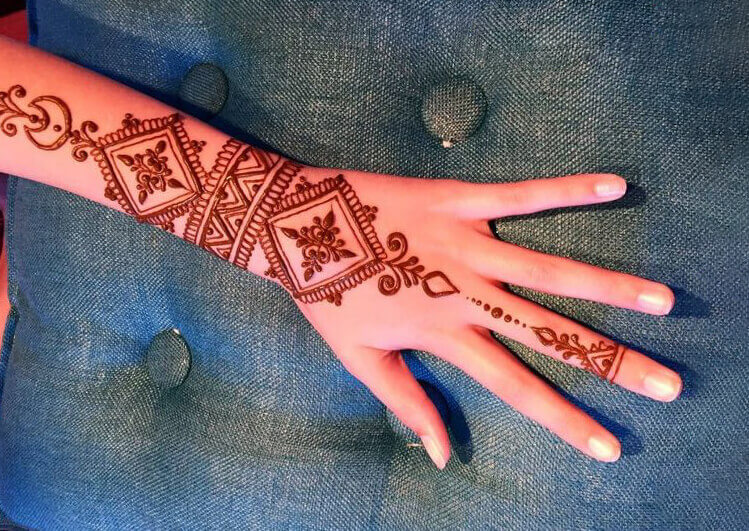
14. Geometric Arabic designs: Geometric Arabic mehendi designs include the use of squares, diamonds, circles and rectangles often, with use of spheres and many other geometrical patterns.
This can be used either as a simple mehendi design or an intricate mehendi design.

15. Floral Arabic Mehndi Designs: Small and big flowers with dots interspersing such floral patterns are often the choice of a bridal make up.
It is quiet eye catching and can often involve different floral Mehndi patterns at one time or the use of single floral pattern in the Mehndi design throughout the upper and the lower part of the palm.
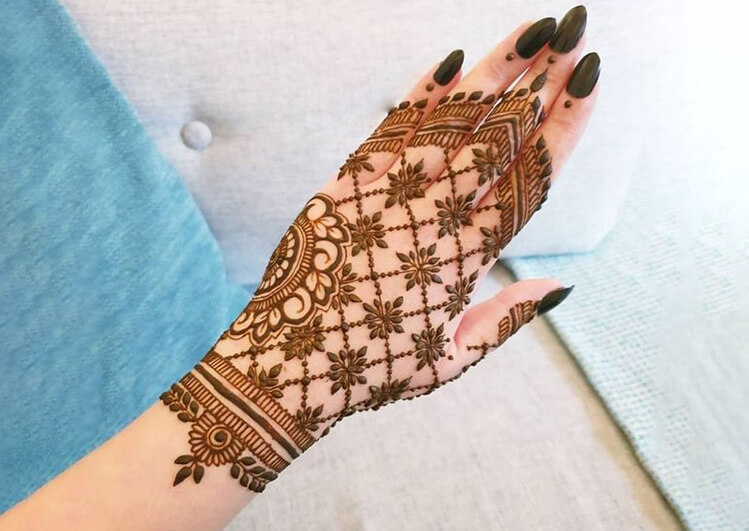
16. Criss-cross Arabic Mehndi design: Criss-cross Arabic Mehndi designs are quite popular and easy to make.
You can either draw straight lines across the palm, criss-crossing them or you can draw patterns over the criss-cross Mehndi patterns.
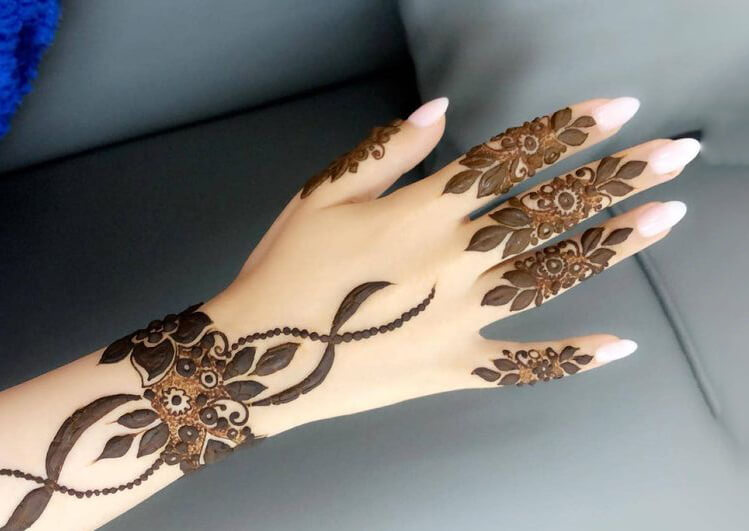
17. Floral Finger Arabic Mehndi design: Draw any type of flowers but be careful to bring out this design decoration only on your fingers with minimal or no decoration of the palms.
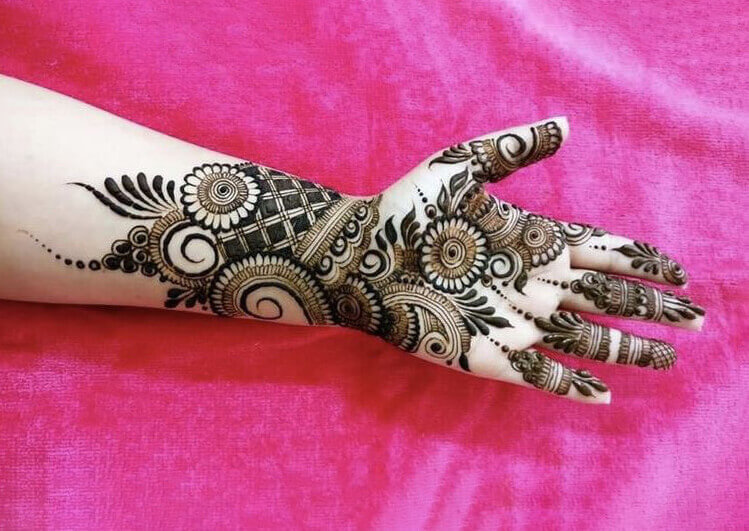
18. Mughal patterned Arabic Mehendi design: Mughals had evolved a particular Mehendi design pattern that spread across, over the centuries.
They used object based designs- generally, pigeons, lotuses and roses were a common object around which the Mehendi designs were created.
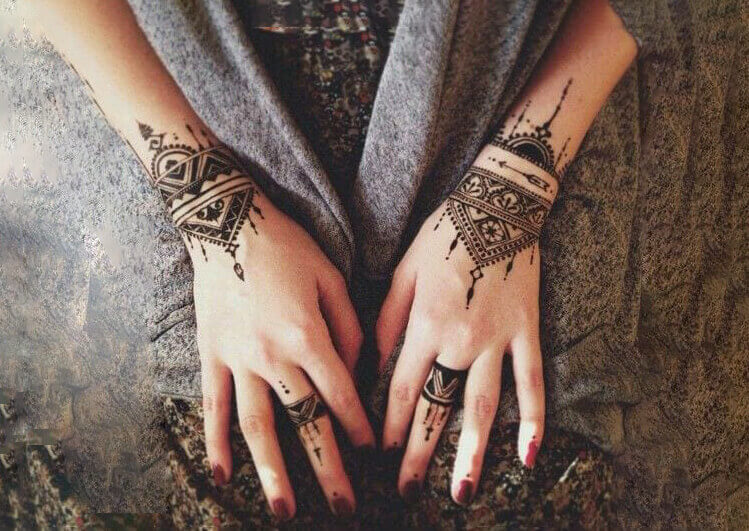
19. Triangular patterned Arabic Mehandi design: Triangles can be beautifully depicted through this form of Arabic Mehandi designs. Triangles can be small or big, triangles can be interspersed or drawn within one within the other and this would form a beautiful Mehandi design in no time.
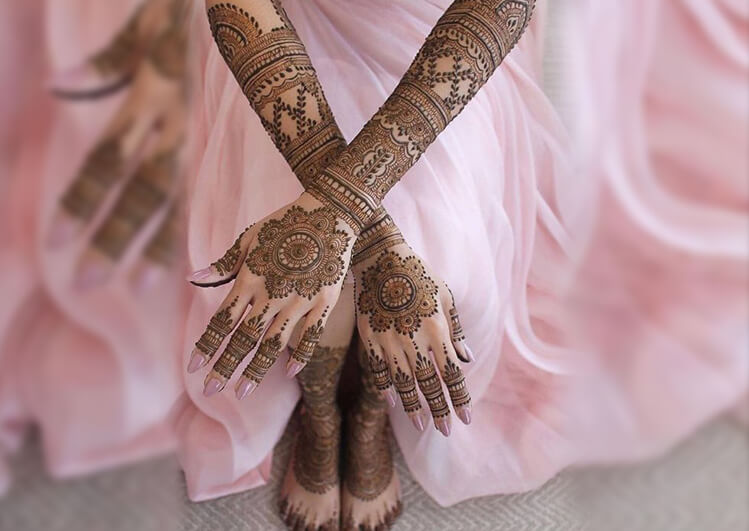
20. Symmetric patterned Arabic Mehndi design: Symmetry matters when you have to draw spotlessly.
A beautiful symmetrical design may not be very complex or ornate but can stand out distinctly when drawn appropriately.

21. Cones and meshwork Arabic Mehndi design: Cones are drawn often with fine or gorgeous meshworks.
Meshworks can often make a lot of difference to a Mehndi design. Cones can lead to extensions and vine patterns are quite common in this type of a design.
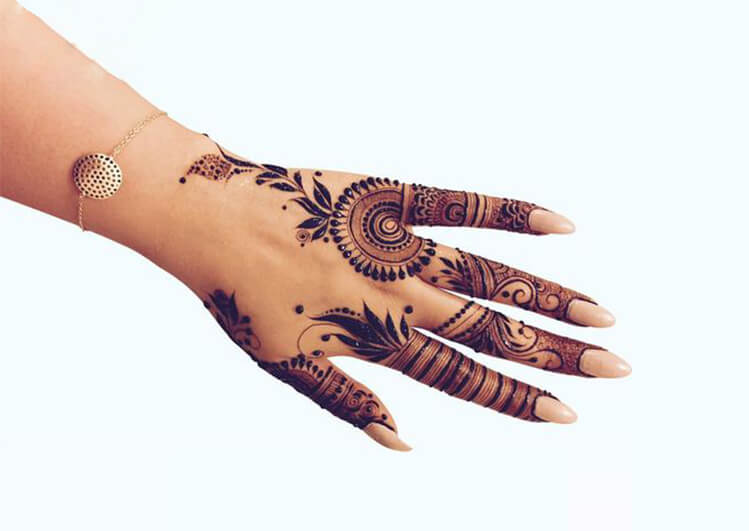
22. Finger decorations in Arabic style: Sometimes, if you just decorate the knuckles of the fingers very well can make all the difference. Knuckle mehndi designs look beautiful when they are smaller, bolder and more structurally symmetrical rather than floral or leafy Mehndi designs.

23. Curve or comma shaped Mehndi design: You can create a Mehndi design within a curved line instead of making it run straight to the wrist. This adds to the vigour of the style and pattern.
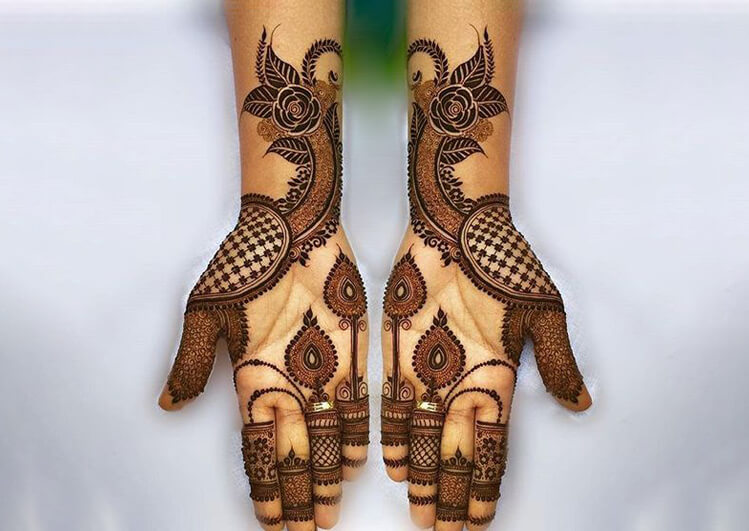
24. Chequerboard Arabic Mehndi design: Draw a chess board over your hand if you like the game. Further, decorate it with flowers or any other form or pattern of your choice.

25. Yemeni Arabic Mehndi design: Khidab is made out of the gall ink derived from plants and is used in mountainous regions around Sanaa instead of Mehndi for designing Mehndi.
They have elaborate patterns and bold singular designs either used together or singularly.
Mehndi designs of Morocco
In Morocco, Mehndi designs can also be found on the doors often smeared with Mehendi. Mehendi forms an essential component of their daily living and this ritual is followed primarily with the intention of warding off evil spirit.
Interestingly, in Morocco, Mehndi is used for festivals, weddings, to bring good luck, to ward off Evil spirits and is even used on occasions of circumcision.
Some of the Mehndi designs commonly used include,
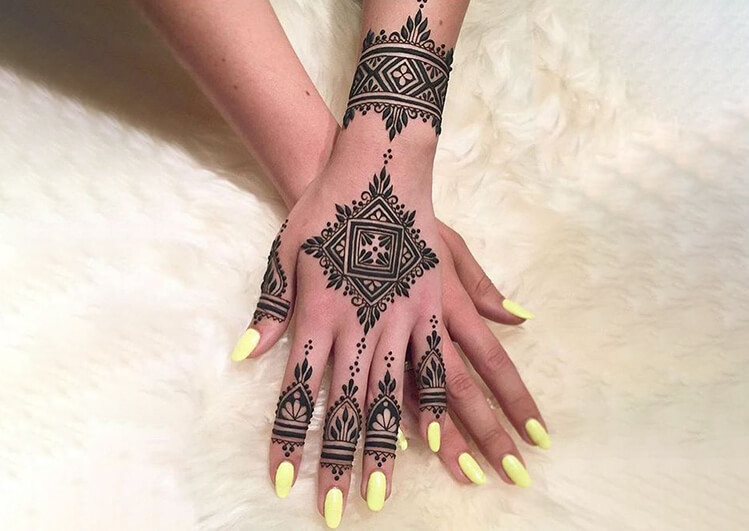
1. Diamond shaped Moroccan design: Small diamonds give way to bigger diamonds in this simple Mehendi design and each diamond is interspersed with figures, patterns and forms that suit or fit the diamond pattern of Mehndi design.
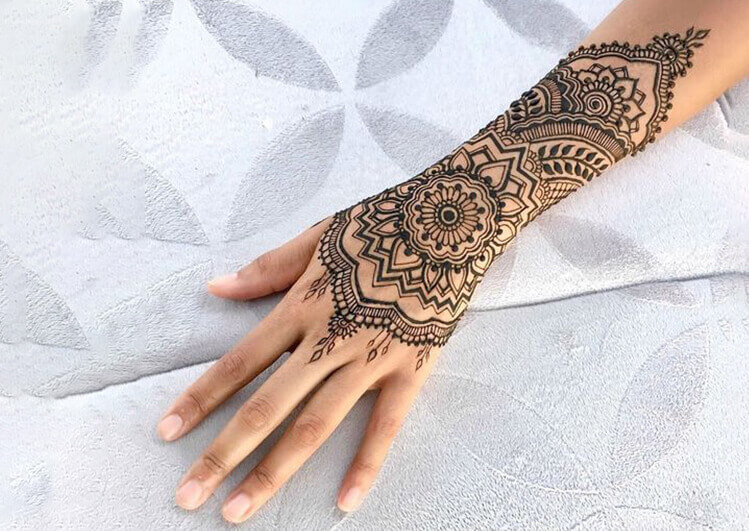
2. Tribal Moroccon Mehndi design: Tribals are known to form flame shapes all across the upper and lower palms. These flame patterns in the simple Mehendi design are suitably decorated with leaves and other small intricate patterns and shapes.
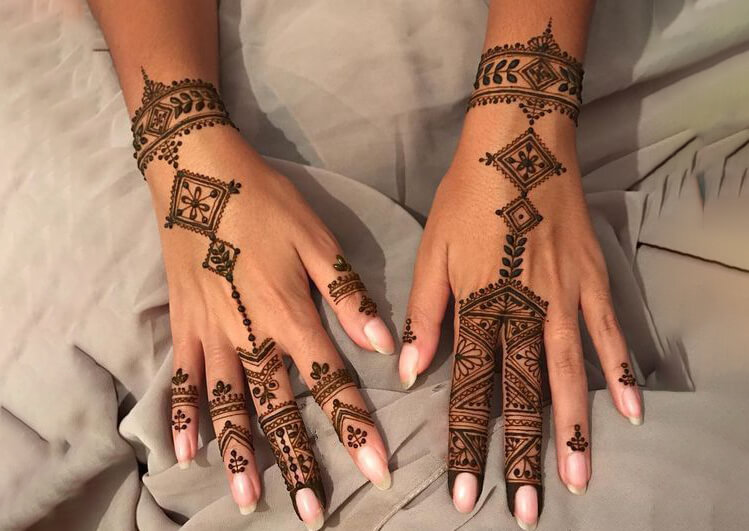
3. Contemporary Morroccon patterns: Generally dots and simple star shaped or wedge shaped patterns are mostly present throughout the palm and fingers of this Mehndi design.
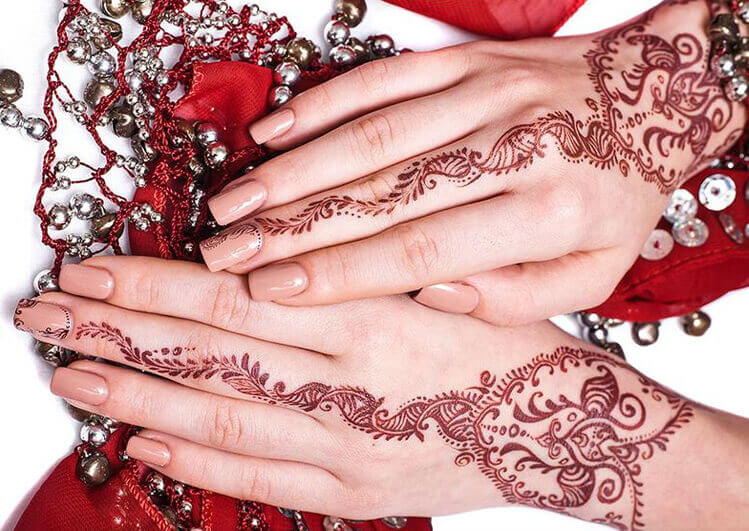 4. A single Paisley Mehandi design: This Mehandi design can often do wonders, when it comes to a Mehndi art form.
4. A single Paisley Mehandi design: This Mehandi design can often do wonders, when it comes to a Mehndi art form.
A single Paisley is often made on the palm and the intricacies branch out till the wrist in this Mehndi design.
The intricacies might often be symmetrical or asymmetrical in nature and depending on the Paisley structure, the asymmetrical and symmetrical patterns can be used in the mehndi design.
This simple Mehendi design is often beautiful enough for you to not turn your eyes away from it.
Fun Facts about the bridal Mehndi designs and patterns
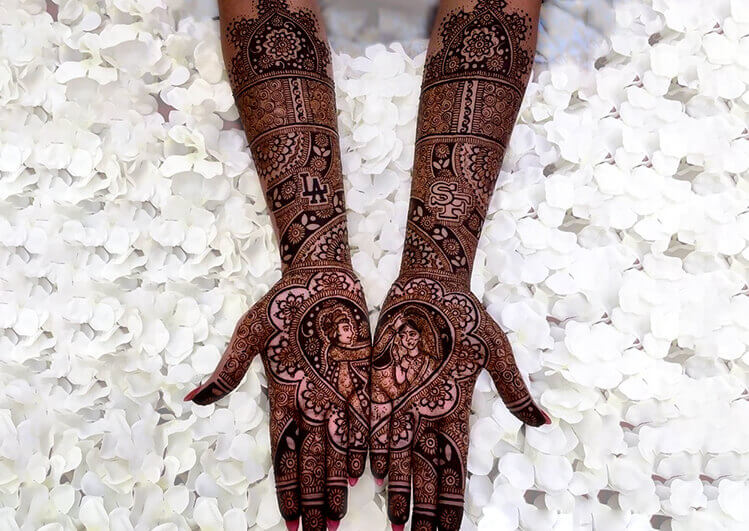
- The groom’s name is hidden in the bride’s Mehndi in many parts of Indian subcontinent.
- The bridegroom has to find his own name in the bride’s palm. Until, the groom finds the name in the Mehendi design of the bride's palm, the wedding night is not allowed to begin.
- The bride would not work in the groom’s residence, like manual labour unless her Mehndi wears off.
- If the scraps of Mehndi leaves fall from a bride’s palm into the hands of an unmarried girl, she would soon find her match too.
Some Interesting Facts about the Mehndi

The Mehendi designs gained finery and became more and more complicated with the coming of the Mughals to India.
With their coming, the minarets, minars and the intricate Indo-Arabic Mehndi designs came into existence.
The Mehendi designs became more and more intricate and lofty.
Do you wonder who brought Mehndi to India?
Was it present here in India since earlier times?
Did you know that Mehndi was widely used in ancient Egypt, Morocco and travelled all the way to India through the Silk Route.
Babur, the Mughal invader, attacked India in 1526 AD, winning the first battle of Panipat.
Babur was a Turk from his father’s side and descended from the Turkic conqueror Timur.
Babur was a Mongol from his mother’s side and hailed their descent from the Mongol invader Chenghiz Khan.
It was his conquest that finally laid grounds for the Arabic Mehndi designs. These Mehndi designs were used primarily in the Middle-East in those times.
The merger of Indian styles led to the foundation of the Indo-Arabic style of Mehndi.
- It is said that one of the oldest cave paintings of Ajanta has been found to be dyed with Mehndi (dating back to 400 BC).
- Henna designs were often done on drum skins, leather, silk and wool often.
- Simple Mehendi flowers are often used to manufacture perfumes and this practice is widely in use, even today.
- Did you know that you can use simple Mehndi for treatment of blisters, ringworms, Athlete’s foot, cankers and sores.
- Ancient Egyptians knew how to make simple Mehendi oil. The simple Mehendi oil was used as an effective ointment preventing sunburns and sun blisters.
Conclusion: The Mehndi designs are increasingly used all across the Indian subcontinent, Pakistan and Bangladesh, the middle West. The Henayans are now often found on the streets of Canada, US and European nations. Indians across all continents love the art of simple Mehendi use.
They would definitely love to have their hands painted for every occasion they hold important in their lives. Be it their brother’s wedding, their sister’s engagement or their child’s first birthday.
Some people overseas call Mehndi artists from their homeland to get a feel of their beautiful soil. The Indian subcontinent, Pakistan, Bangladesh and Nepal widely consider Mehndi to be a lucky charm and nothing begins without the fresh smell of the Henna.
Image source:pinterest


 Chat With Astrologer
Chat With Astrologer
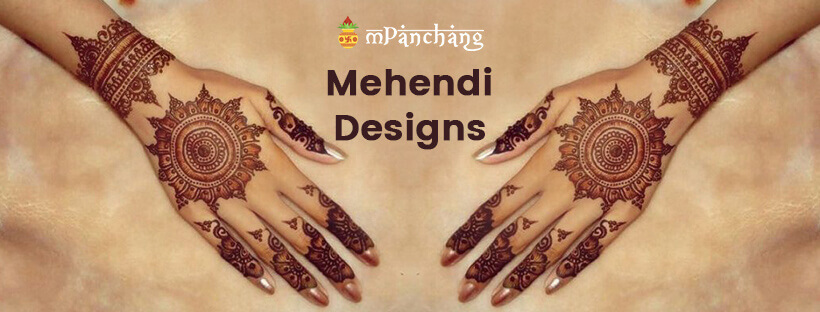



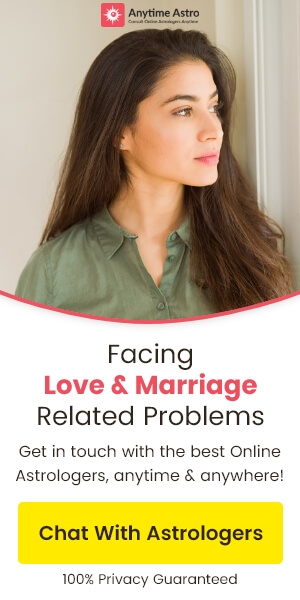


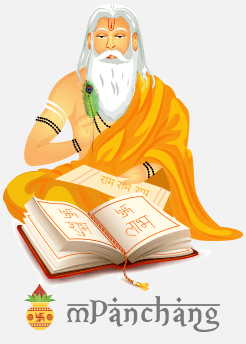


Leave a Comment